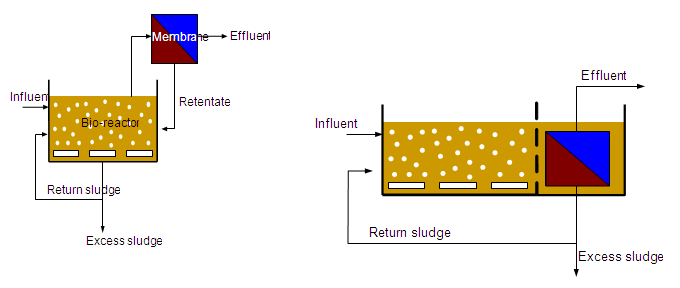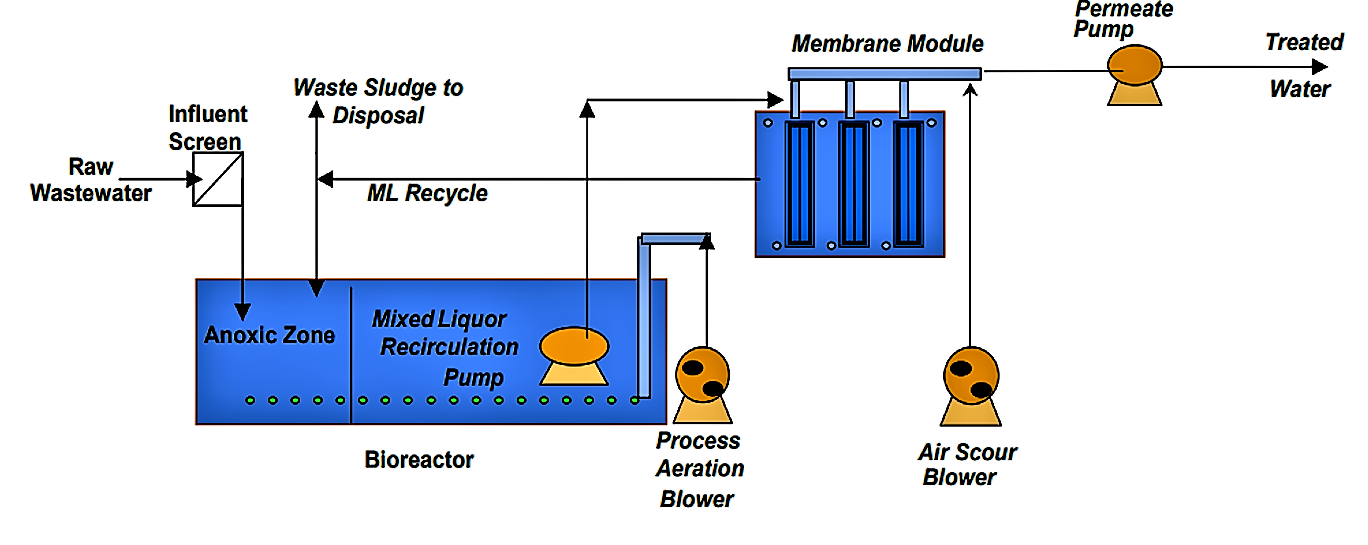Troubleshooting Common Issues with Membrane Bioreactor Systems
Troubleshooting Common Issues with Membrane Bioreactor Systems
Blog Article
Membrane Bioreactors Described: Reliable Solutions for Tidy Water
Membrane layer bioreactors (MBRs) have actually arised as a sophisticated service for dealing with journalism obstacles of wastewater treatment. By incorporating biological processes with sophisticated membrane layer filtration, MBRs not just boost the high quality of cured water but likewise lower the spatial demands of treatment centers. As environmental worries heighten, the role of MBR innovation in advertising sustainable water administration ends up being significantly considerable. The complexities of their operation, benefits, and possible applications merit a closer assessment to fully comprehend their influence on the future of water treatment.

What Are Membrane Bioreactors?
Membrane bioreactors (MBRs) are innovative wastewater therapy systems that combine biological destruction processes with membrane layer filtering modern technology. This combination enables for the reliable removal of pollutants from water, making MBRs a favored choice in numerous applications, consisting of metropolitan wastewater treatment and commercial effluent monitoring.

Among the essential benefits of MBRs is their ability to generate top notch effluent, usually appropriate for reuse in watering or commercial processes. Additionally, MBRs require a smaller sized footprint contrasted to conventional therapy systems, making them suitable for urban settings where area might be restricted.
Furthermore, MBRs can properly manage varying influent lots and are much less at risk to the results of toxic shocks. These attributes contribute to their expanding appeal as a sustainable solution for addressing the increasing demand for tidy water while decreasing ecological impacts.
How Membrane Bioreactors Job
While the operation of membrane bioreactors (MBRs) may seem facility, it essentially revolves around the harmony between biological processes and membrane layer filtration. MBRs integrate a biological treatment procedure, generally turned on sludge, with a membrane layer separation system to deal with wastewater effectively.
In an MBR system, wastewater is first presented right into a bioreactor where bacteria deteriorate organic matter and other pollutants. The biological task minimizes the concentration of pollutants while promoting the growth of biomass. Following this biological treatment, the blended liquor undergoes membrane layer purification, which can be microfiltration or ultrafiltration, depending upon the wanted effluent high quality.
The membranes work as a physical obstacle, enabling water and small solutes to pass while maintaining put on hold solids and bigger particles. This enables the system to keep a high concentration of biomass within the reactor, improving the treatment efficiency.
Furthermore, the continual splitting up of treated water from the biomass assists in a portable design and minimizes the impact of the treatment facility. Overall, the mix of organic deterioration and membrane layer filtration in MBRs causes efficient and trusted wastewater treatment, ensuring high-quality effluent ideal for different applications.
Advantages of MBR Innovation
Among the key benefits of membrane layer bioreactor (MBR) official website innovation is its capacity to produce premium effluent with a substantially decreased footprint contrasted to standard wastewater treatment approaches. MBR systems successfully incorporate organic treatment and membrane layer filtration, leading to superior elimination of contaminants, consisting of put on hold solids, pathogens, and raw material. This capacity brings about effluent that commonly fulfills or surpasses strict governing criteria for reuse and discharge.
In addition, MBR innovation permits greater biomass focus, which boosts the therapy efficiency and lowers the called for reactor quantity. This compact style is specifically helpful in city areas where space is limited. The functional adaptability of MBR systems additionally indicates they can adjust to varying influent top qualities and circulation prices, making them ideal for a broad array of applications.
Furthermore, the minimized sludge manufacturing related to MBR processes adds to reduce functional and upkeep costs. The membranes function as a physical obstacle, reducing the risk of blocking and allowing longer operational periods between cleansing. On the whole, the advantages of MBR innovation make it an eye-catching remedy for lasting wastewater therapy, resolving both environmental problems and the need for efficient resource administration.
Applications of Membrane Layer Bioreactors
With their convenience and effectiveness, membrane layer bioreactors (MBRs) locate applications across different industries, including metropolitan wastewater treatment, commercial processes, and also water reclamation. In municipal setups, MBRs give a small service for dealing with wastewater, efficiently eliminating pollutants while at the same time generating high-quality effluent that fulfills rigorous governing standards. This makes them particularly appropriate for areas with limited space.
In commercial applications, MBR innovation is made use of for dealing with process water, specifically in markets find out this here such as food and drink, pharmaceuticals, and petrochemicals. These markets gain from MBRs' capability to take care of high organic loads and their effectiveness in recovering useful sources from wastewater, such as nutrients and water.
Moreover, MBRs play a vital function in water recovery efforts, allowing the reuse of treated wastewater for watering, commercial processes, and even as potable water after more treatment (Membrane Bioreactor). Their performance in getting rid of virus and pollutants makes them a trustworthy selection for ensuring water top quality in different reuse applications
Future of Water Treatment Solutions
The future of water treatment services is poised for transformative developments driven by technical development and increasing ecological understanding. As global water deficiency becomes a pressing concern, brand-new methods, including membrane layer bioreactor (MBR) systems, are readied to play a crucial function in improving the efficiency and sustainability of water therapy procedures.
Emerging innovations such as expert system and device learning are anticipated to enhance treatment procedures, enabling real-time tracking and predictive upkeep. This will certainly enhance the overall reliability and performance of water treatment centers. In addition, innovations in membrane products, such as graphene and nanofiltration, promise to enhance permeation rates and lower fouling, bring about lower energy intake and operational prices.
Furthermore, the integration of renewable resource resources into water therapy plants will certainly contribute to greener practices. The round economy version will likewise gain grip, encouraging the recovery of useful resources from wastewater, such as nutrients and energy.
Verdict

Membrane bioreactors (MBRs) have actually emerged as an innovative service for addressing the pressing difficulties of wastewater therapy. By incorporating organic procedures with advanced membrane layer filtration, MBRs not only boost the quality of treated water however additionally decrease the spatial requirements of treatment centers.One of the crucial advantages of membrane layer bioreactor (MBR) innovation is its capacity to generate high-quality effluent with a dramatically minimized footprint compared to conventional wastewater therapy methods.With their flexibility and efficiency, membrane This Site layer bioreactors (MBRs) locate applications across various industries, consisting of community wastewater therapy, commercial procedures, and even water improvement.In conclusion, membrane bioreactors stand for a significant advancement in wastewater therapy technology, incorporating biological procedures with reliable membrane purification to produce top notch effluent.
Report this page